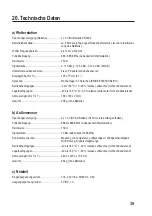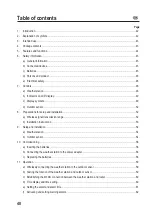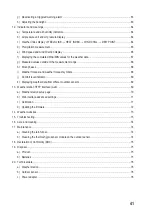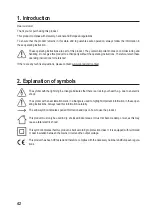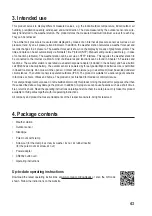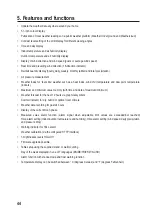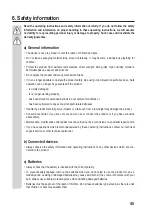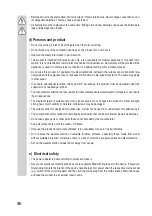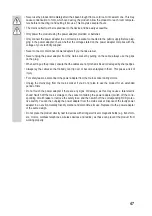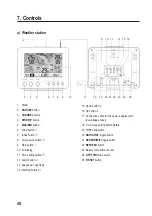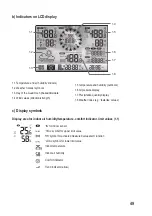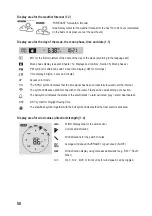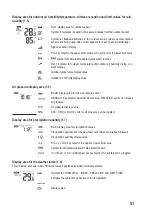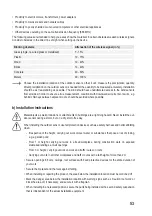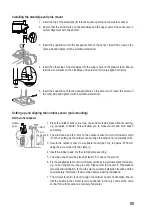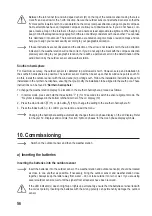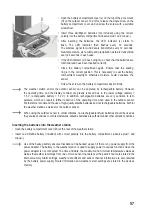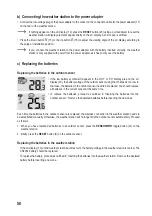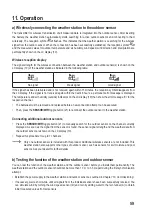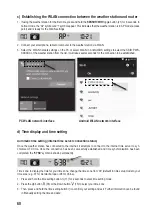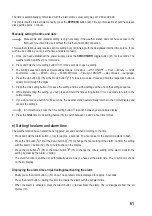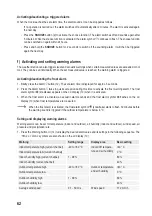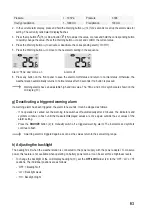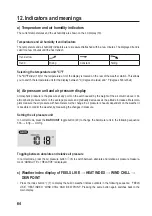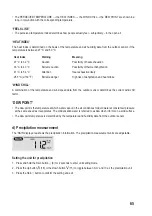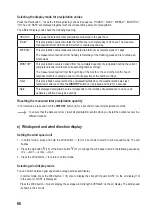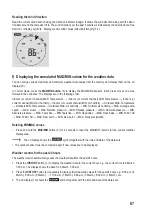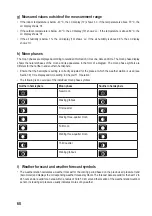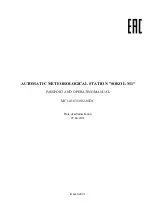
53
• Proximity to electric motors, transformers, power adapters
• Proximity to mains sockets and network cables
• Proximity to poorly shielded or uncovered computers or other electrical appliances
•
Other devices operating on the same transmission frequency (868 MHz)
The following values are intended to help you assess how the materials in certain obstacles weaken wireless signals.
Consider obstacles in the direct line of sight when setting up the device.
Blocking obstacle
Attenuation of the wireless signal (in %)
Glass (single, no wired glass or metallised)
5 - 15%
Plastic
10 - 15%
Wood
10 - 40%
Bricks
10 - 40%
Concrete
40 - 80%
Metals
90 - 100%
Choose the installation location of the outdoor sensor so that it can measure the precipitation quantity.
Direct precipitation on the outdoor sensor is needed for the quantity to be measured accurately. Installation
should be as free-standing as possible. The wind should have unadulterated access to the wind sensors
from all sides in order to ensure a true measurement. Locations with downward air currents or swirls, e.g.
behind chimneys between adjacent roofs, should be avoided where possible.
b) Installation instructions
Metal objects as well protrusions or attachments to buildings are a lightning hazard. Never install the out-
door sensor during a storm, but on a dry, storm-free day.
When installing the outdoor sensor, use fall protection devices such as a safety harness and net/scaffolding
when:
- Irrespective of the height, carrying out work on/over water or substances that pose a risk of sinking,
e.g. a garden pond
-
From 1 m height: carrying out work in a fixed workplace, during construction work on exposed
staircases/landings, at wall openings
-
From 3 m height: carrying out work on work and traffic routes on roofs
-
Carrying our work in all other workplaces and traffic routes with a fall height of more than 2 m
•
Secure openings in floors, ceilings, roof surfaces with fixed protective devices for the entire duration of
your work.
• Secure the material and the tools against falling.
• When installing or repairing the product, the area below the installation location must be cordoned off.
• Mark the danger area below the installation location with warning signs such as ‘Caution roof work’ or
block the area off, if necessary, and secure it with a flagman.
• When installing in an elevated position, secure the parts being installed with a second safety suspension
that is independent of the actual installation equipment.

